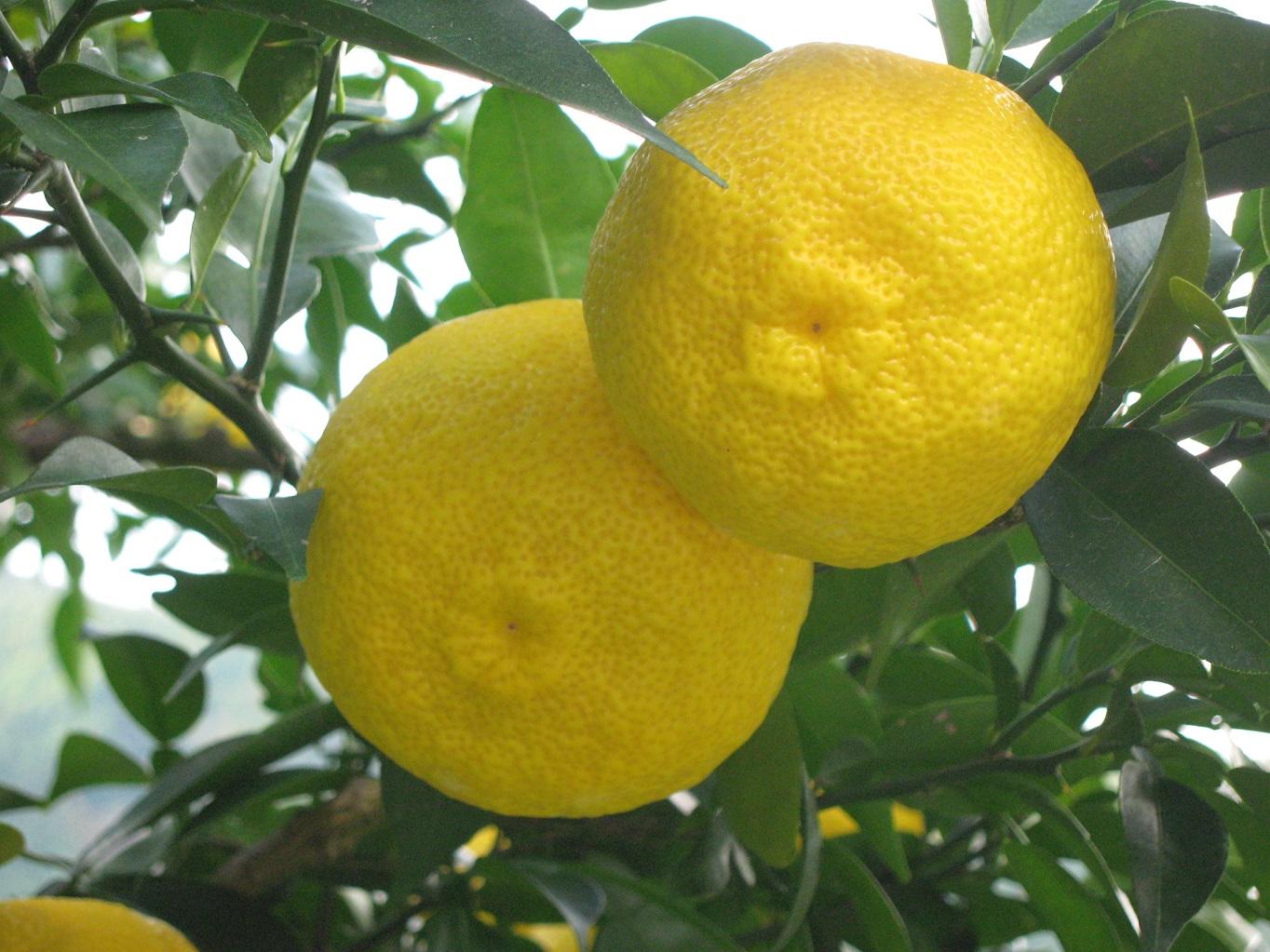Kito Yuzu
| Registration Number | 42 |
|---|---|
| Name of the GI | Kito Yuzu,Kitō Yuzu |
| Class | Fruit |
| Date of Protection | 2017/09/15 |
| Producing Area |
Tokushima Prefecture
Naka Township, Naka County |
| Applicant - Name and Address | Kitō Yuzu Shinkō Kyōgikai (Kitō Yuzu Promotion Association) 16-1, Oji, Nobuno, Naka town, Naka country, Tokushima Prefecture |
"Kito Yuzu" are yuzu characterized by a thick peel that is not susceptible to damage, and a beautiful appearance. The characteristics are due to line selection repeated for over half a century at Naka Town in Tokushima Prefecture. Their quality is highly esteemed by markets in both Japan and the EU.
"Kito Yuzu" are cultivated according to standards set by the producers' group for cultivars of yuzu that have been selectively bred from the varieties indigenous to Naka Town.
Only fruit with a diameter greater than 4 cm and without scratches or puncture marks is selected for shipping to greengrocers. If fruit without meeting the above requirements is not markedly blemished or insect-damaged, and if it is not rotten, it can be provided to the fruit processing operators.
Naka Town is surrounded by mountains with an elevation higher than 1,000m. Over 90% of the region is mountainous. The area is characterized by cool climate, drastic change in temperature between day and night, and high summer rainfall. It is therefore a suitable area for producing yuzu that exhibit a vivid color, are highly aromatic, and are resistant to disease.
In this region from long ago, the word "vinegar" signified "yuzu vinegar (1)", as yuzu trees grew in the gardens of each household and on the ridges of the fields.
Full-fledged production of "Kito yuzu" began from 1960, when six people in former Kito Village experimentally shipped "Kito yuzu" to the Osaka Central Market. These yuzu won great acclaim, leading people in the region to start raising seedlings for line selection from 1961.
Thereafter, the production of "Kito yuzu" has expanded to the five towns and villages of the Naka River(2) watershed; Kito Village, Kaminaka Town, Kisawa Village, Naka Town, Aioi Town and Wajiki Village, now merged into Naka Town.
In the region, various uses have been found for the highly acidic yuzu, including as flavoring for cuisine.
- Yuzu vinegar: it differs from grain vinegar, black vinegar (produced from unpolished rice etc.), brewed vinegar and fruit vinegar in that it is an unfermented fruit juice. It is produced by adding salt etc. to freshly squeezed yuzu juice. This is preserved and then used to dress seasoned vegetables and flavor fish and hotpot dishes.
- The Naka River (Nakagawa): It is the longest river in Tokushima Prefecture. In the river water quality survey carried out in 2006 by the Shikoku Regional Development Bureau, it gained the distinction of having the "most favorable water quality" and was pronounced the cleanest stream in Shikoku.


